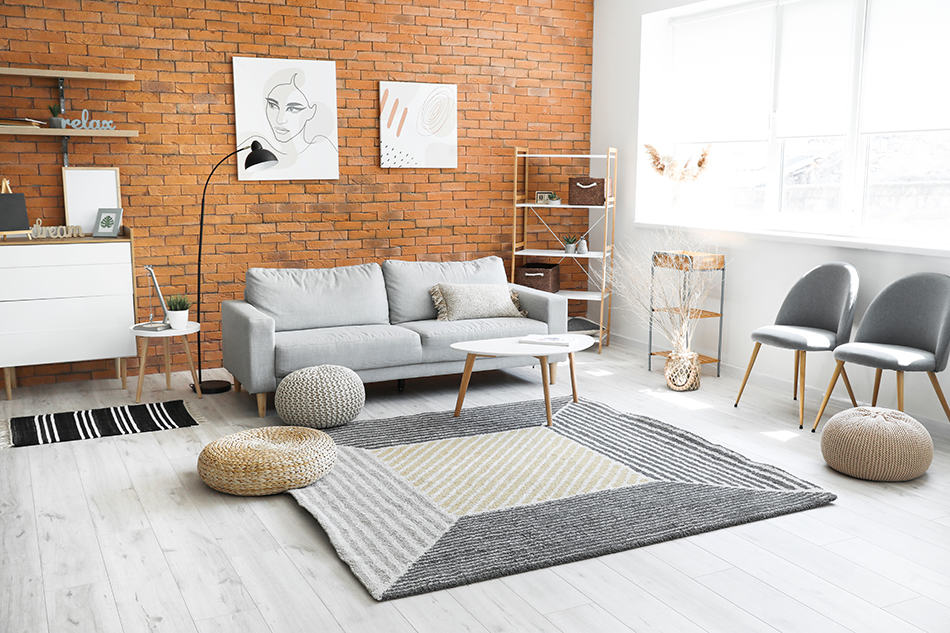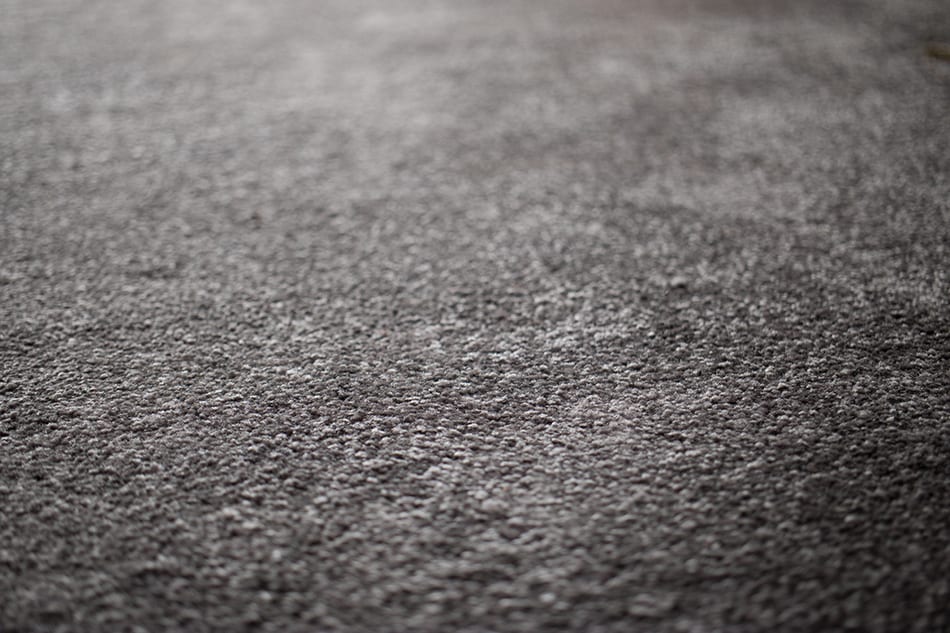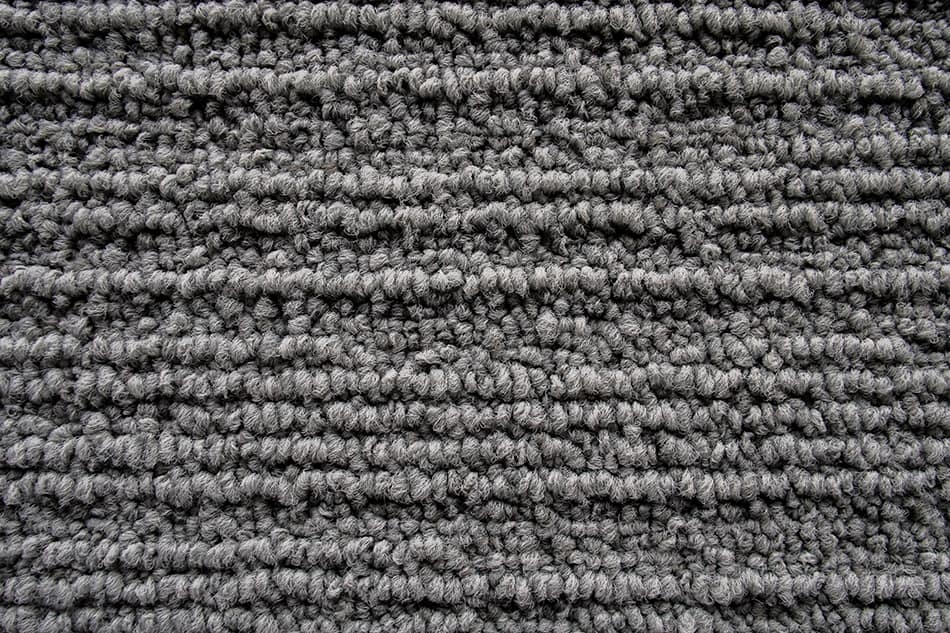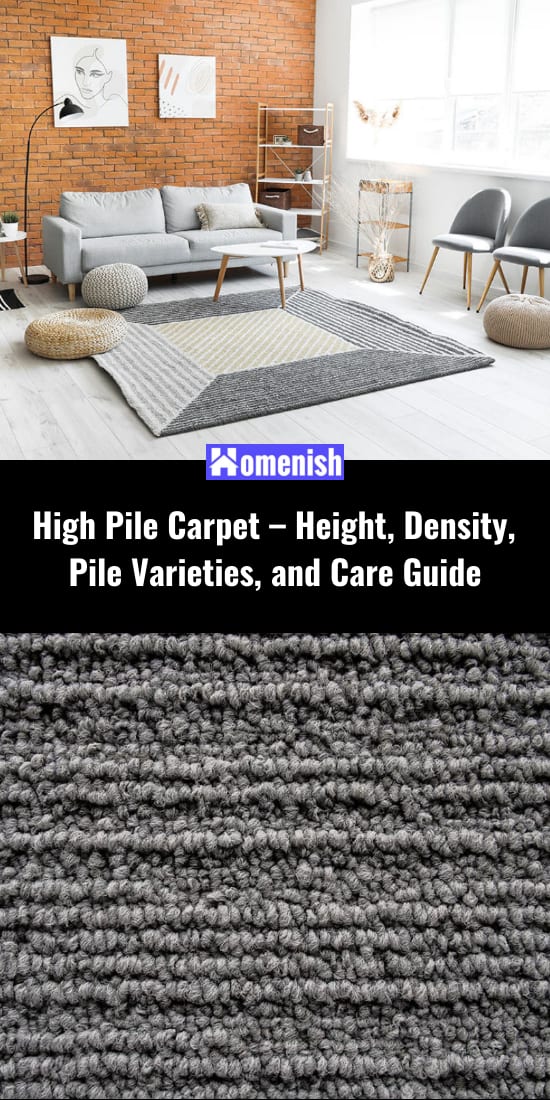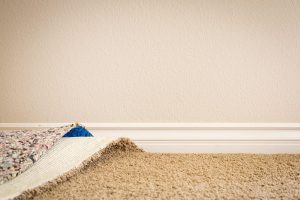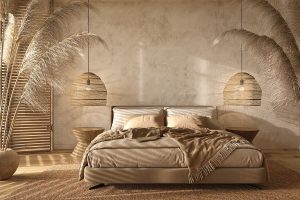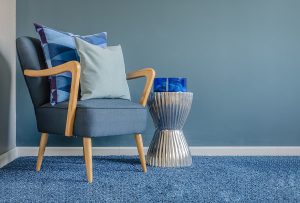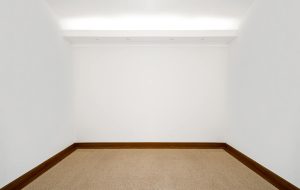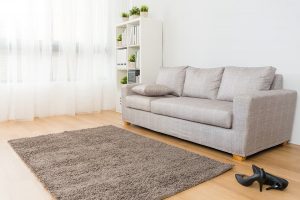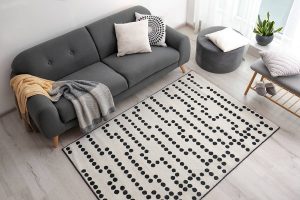Do you want the feel of a luxury carpet in your home? Then you want high pile carpets.
Let’s take a look at what we mean when we say “high pile” and the different types of high pile carpet available.
Carpet Height (Pile Height)
The pile of carpet simply means the carpet fibers that stick up off the base of the roll, tile, or rug. The pile height is how long those fibers are.
You might have:
- Low pile = .25 inch or less
- Medium pile = .25 – .5 inch
- High pile = .5 – .75 inch
High pile carpet, then, is the type of carpet with the longest fibers. This means there’s more material for you to walk on, creating a softer cushion underfoot.
If you’re looking for even longer fibers than .75 inch, you want plush or shag carpet. These aren’t as common as high pile and lower pile carpets because they’re more difficult to keep clean, but if you want the ultimate comfort, the longer the pile, the softer it should be.
There are lots of benefits of longer carpets, and we’ll talk about those as we discuss density and cuts, but two of the standalone benefits of any high-pile carpet are warmth and noise reduction. Long fiber length makes the carpet thicker, which means your foot has more padding against the cold floor underneath. The carpet fibers also retain heat between the fibers, especially if it’s a dense carpet.
As for noise-dampening, the taller material provides more surface area for sound to absorb into. This is why you don’t have an echo in a carpeted room. If you want to make your home more peaceful, a high-pile carpet helps. Of course, you’ll also want to think about installing solid doors in the bedroom, double-paned glass throughout, and thick insulation in the walls.
Carpet Density
Now, even though high pile carpet is the longest, it’s the least dense. That’s because you need some space in the carpeting for the fibers to squish down.
Low-pile carpets then usually look more uniform, with the fibers being woven closer together. It would be difficult to pick out one fiber from another. Because it’s denser and lower, low-pile carpet is easier to clean.
It doesn’t allow as much dirt to sink down to the base because it’s so dense, and because it’s so short, there’s not as much material to clean anyway. Dirt and pet hair rest more on the surface. The downside to this dense carpet is that the surface feels hard on your feet.
High-pile carpets are just the opposite. Because they’re not as dense, dirt can sink down in, and because there’s a lot of material on top of the base, it can be more difficult for a vacuum to suck up what’s below the surface.
Medium-pile carpets combine the best of both. They’re easy to clean with a vacuum with decently strong suction, and they’re soft underfoot. Most homeowners choose medium-pile carpet, especially if they have children or pets.
Types of Pile – Cut and Loop
All traditional forms of carpet are made of yarn. The yarn can, however, be cut in different styles.
Cut Carpet
It can be cut, in which one fiber of carpet comes up out of the base and is cut to length. Cut carpet is the softer of the two options, though the fibers aren’t as strong as loop carpet.
Of the cut types, there is Saxony and Velvet (also called Plush), and these have fibers that are cut evenly across the top but are wider at the surface than at the base. This gives them room to compress down when you walk on them. Saxony is denser than Velvet, meaning there are skinnier fibers per square inch, whereas Velvet has fewer, thicker fibers.
There is also Random Shear, and Frieze cut carpet. These carpet fibers are twisted and cut to length. The difference is that with Random Shear, some of the carpet tips are cut at an angle rather than straight across. This helps give the carpet a textured appearance. Frieze is cut to different lengths to help hide footprints and other indentations in the carpet.
Of the four cut types of carpet, Velvet is the softest, so the most comfortable so far would be high pile Velvet-cut carpet.
Loop Carpet
The yarn can also be looped, which means the fiber comes up out of the base, then loops back down into the base without being cut. The effect is that one fiber makes two as if you were sewing the carpet threads into the base.
Loop carpet is stronger than cut carpet because one fiber actually forms two. It’s also denser than cut carpet, meaning it’s not as soft, though a high-pile loop carpet can be a good compromise between softness and durability.
Like cut carpet, loop carpet comes in a few different styles. The first is Berber. This type of carpet uses thicker fibers than the rest, and so is the most durable. There is also a level loop and a multi-level loop. Level loop carpet is all the same length, while multi-level loop is looped randomly at different heights. This gives it a textured appearance and is good for hiding footprints.
You can also get carpet that features a combination of cut and loop fibers. The loops are also multi-level. The goal is to make the carpet as durable but as soft as possible while also hiding indentations.
Choosing Between High and Low Piles
Both carpet lengths, and their various cut styles, have strengths and weaknesses. So, how do you choose between the two?
If you want comfort underfoot, choose a high pile. If you want durability and cleanliness, choose low pile. If you want soft and smooth, choose Velvet, but if you want a soft, textured look, go with Frieze. On the other hand, Berber gives you the most durability with the least comfort. The multi-level loop is more comfortable and is still very strong.
If you can’t decide and want a good all-rounder, you can’t go wrong with a medium-pile Cut Loop carpet. The nice thing is you can choose different heights and cuts in each room. Your bedroom, for example, might be the safest from heavy foot traffic and dirt, so it would make sense to use Velvet carpet there. The kids’ room and the main living area, however, might do better with a medium-pile Random Shear cut. If you’re laying carpet in the kitchen, entryway, or hall, go with Berber.
Keep in mind that besides general cleanliness, low-pile carpets are better for people with allergies because the shorter carpet fibers won’t trap dust, pollen, and other irritants. They’re also easier to vacuum pet hair off of if you need to prepare the home for allergy-sensitive visitors.
How to Maintain High Pile Carpet
Assuming you’re leaning toward a high pile, here is how to keep it looking nice for as long as possible.
No shoes on the carpet! – Because high-pile carpet traps dirt, the best way to keep it clean is to not track dirt through the room. All carpets can benefit from this rule, so make it a habit to remove shoes before walking on the carpet.
Keep eating and drinking to a minimum – This is tough for most people. We all want to eat in front of the TV or enjoy a drink in the most relaxing room. Just be careful with taking food and drinks into rooms with high-pile carpets. The longer fibers are more difficult to remove stains from. If you do spill something, clean it up right away, as some carpets will have a stain-resistant coating that won’t let the stain set if you get to it quickly enough.
Brush pets daily – Like dirt, pet hair and dander will sink down into high-pile carpet. If you can’t keep the pets out of the room, at least brush them down once a day to remove any excess fur. Any hairs that come out on the brush lessens what settles into the carpet!
Shift furniture weekly – Some high-pile carpet is cut to reduce indentations, but it’s always a good idea to not let furniture sit in one spot for too long. Make it a habit to shift your furniture an inch or two once a week and let the carpet underneath the legs fluff back up. You can also buy furniture mover feet to distribute the weight on top of the carpet over a wider area.
Consider color – Remember that lighter colors show dirt and stains faster than darker colors. The only exception to this rule would be if you have a light-colored pet. In that case, the light fur will show up more easily on a dark carpet, so choosing a color the pet fur would blend into might be a better idea.
Vacuuming High-Pile Carpet
Vacuum about once a week. – Because high-pile carpets are not as durable, you don’t want to vacuum too often. The action of the vacuum cleaner will actually add to the wear on the carpet. Still, you need to keep things clean, so a good compromise is to vacuum once a week. Of course, if things get messy, vacuum as needed, but if the carpet looks clean after a week, maybe go two weeks without vacuuming.
If your vacuum has a height setting, make sure it’s on the tallest setting. If your vacuum doesn’t have a height setting, test the vacuum to make sure it won’t snag the fibers of the carpet. This is especially important if you’re using shag carpet.
The good news is that robot cleaners, such as Roomba can roll over the surface of a high-pile carpet. These robots are generally not powerful enough, though, to do a deep cleaning on tall carpets. To get them really clean, you need a powerful vacuum that can suck up what’s resting at the base of the carpet as its bristles move the fibers out of the way.
Shampooing and Steaming High-Pile Carpet
Because most vacuums aren’t powerful enough to do a really deep clean on high-pile carpets, you’re going to want to use a dry shampoo or steam clean them once or twice a year. Don’t worry about the water on the carpet, as this won’t cause any significant wear.
In general, I would recommend steam cleaning over dry shampooing. Dry shampoo will sanitize the carpet if you use a brush to work the powder down to the base of the carpet. It still relies on a vacuum, however, to suck up the powder and any debris.
A steam cleaner uses water and shampoo to loosen up any debris below the surface of the carpet, and the water, along with the increased suction power of the steam cleaner, helps to suck up the dirt. It’s kind of how rain loosens up the dirt and brings it to the surface temporarily.
Removing Stains from High-Pile Carpet
If you notice a stain, try blotting up with a dry paper towel or cloth as soon as possible. If you get to it in time, the stain might not set.
If it doesn’t come up, though, you can mix a half-and-half solution of water and white wine vinegar to spray onto the area, then blot it up. Hopefully, the solution will loosen up the particles of the stain so that you can soak it up. Continue doing this until it becomes ineffective. At that point, go ahead and scrub the affected fibers with the vinegar and water solution to see if you can work any more of the stain out.
Removing Odors from High-Pile Carpet
Carpets with longer fibers can absorb odors more than low-pile carpets, and while vacuuming helps, it might not remove all of the odor. Between steam cleaning sessions, you can sprinkle baking powder on the carpet, then vacuum it up.
Like a dry shampoo, work the baking powder down past the surface, then let it sit for at least half an hour. Vacuum the room thoroughly, and then enjoy the fresh scent. This works great for removing pet odors and cooking scents that have settled into the carpet.
